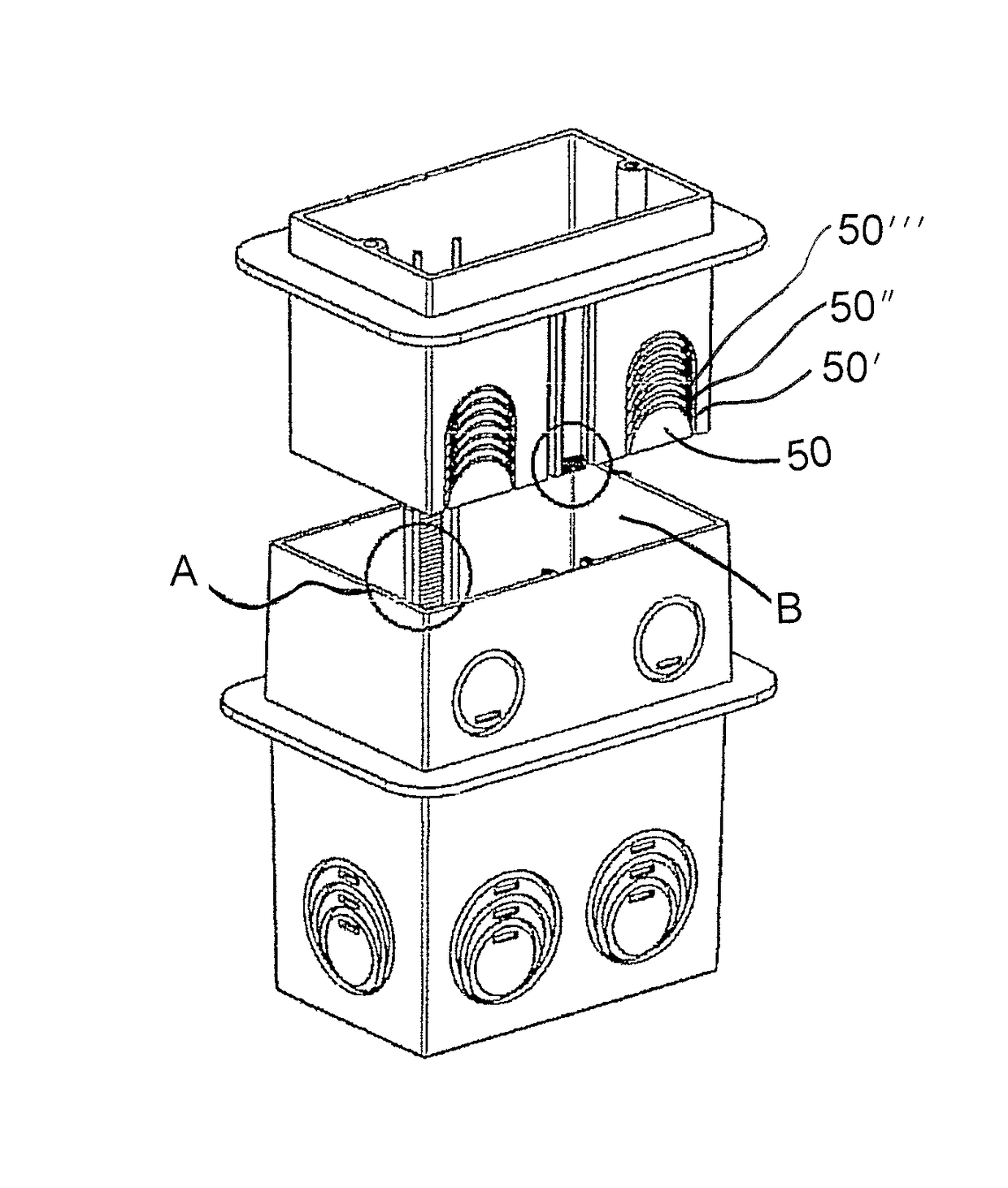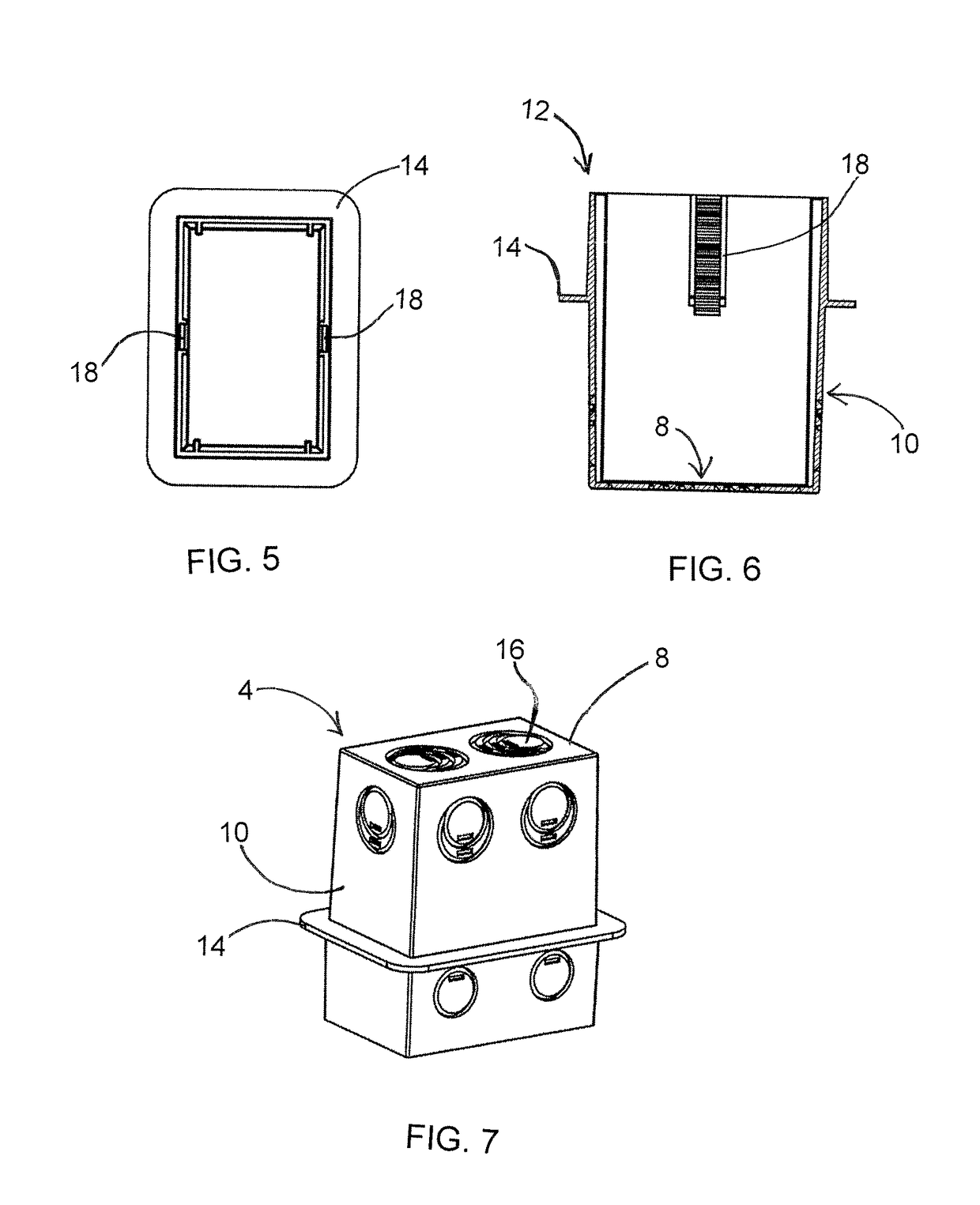ICF electrical box
a technology of electrical boxes and boxes, applied in the field of electrical boxes, can solve the problems of increasing icf construction, lack of awareness, building codes, etc., and achieve the effects of reducing the overall wiring cost of the building, reducing the overall wiring cost, and being convenient to install
- Summary
- Abstract
- Description
- Claims
- Application Information
AI Technical Summary
Benefits of technology
Problems solved by technology
Method used
Image
Examples
Embodiment Construction
[0062]The present invention will be understood by reference to the following detailed description, which should be read in conjunction with the appended drawings. It is to be appreciated that the following detailed description of various embodiments is by way of example only and is not meant to limit, in any way, the scope of the present invention.
[0063]Turning first FIG. 15, a brief description concerning the various components of improved electrical box 2, according to the present invention, will be briefly discussed. This will then be followed by a discussion relating to assembly and use of the improved electrical box 2.
[0064]The improved electrical box 2 generally comprises two main components, namely, a female component 4 (shown in FIGS. 1-7) which is open at a front end thereof and closed at a rear end thereof and is sized and shaped to receive a male component 6 (shown in FIGS. 8-14), which is opened at both a trailing front end and a leading rear end thereof. A detailed disc...
PUM
 Login to View More
Login to View More Abstract
Description
Claims
Application Information
 Login to View More
Login to View More - R&D
- Intellectual Property
- Life Sciences
- Materials
- Tech Scout
- Unparalleled Data Quality
- Higher Quality Content
- 60% Fewer Hallucinations
Browse by: Latest US Patents, China's latest patents, Technical Efficacy Thesaurus, Application Domain, Technology Topic, Popular Technical Reports.
© 2025 PatSnap. All rights reserved.Legal|Privacy policy|Modern Slavery Act Transparency Statement|Sitemap|About US| Contact US: help@patsnap.com



